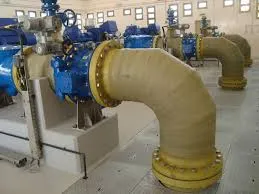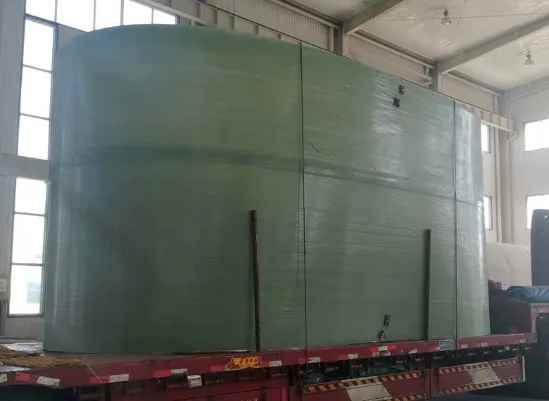
-
 Afrikaans
Afrikaans -
 Albanian
Albanian -
 Amharic
Amharic -
 Arabic
Arabic -
 Armenian
Armenian -
 Azerbaijani
Azerbaijani -
 Basque
Basque -
 Belarusian
Belarusian -
 Bengali
Bengali -
 Bosnian
Bosnian -
 Bulgarian
Bulgarian -
 Catalan
Catalan -
 Cebuano
Cebuano -
 China
China -
 China (Taiwan)
China (Taiwan) -
 Corsican
Corsican -
 Croatian
Croatian -
 Czech
Czech -
 Danish
Danish -
 Dutch
Dutch -
 English
English -
 Esperanto
Esperanto -
 Estonian
Estonian -
 Finnish
Finnish -
 French
French -
 Frisian
Frisian -
 Galician
Galician -
 Georgian
Georgian -
 German
German -
 Greek
Greek -
 Gujarati
Gujarati -
 Haitian Creole
Haitian Creole -
 hausa
hausa -
 hawaiian
hawaiian -
 Hebrew
Hebrew -
 Hindi
Hindi -
 Miao
Miao -
 Hungarian
Hungarian -
 Icelandic
Icelandic -
 igbo
igbo -
 Indonesian
Indonesian -
 irish
irish -
 Italian
Italian -
 Japanese
Japanese -
 Javanese
Javanese -
 Kannada
Kannada -
 kazakh
kazakh -
 Khmer
Khmer -
 Rwandese
Rwandese -
 Korean
Korean -
 Kurdish
Kurdish -
 Kyrgyz
Kyrgyz -
 Lao
Lao -
 Latin
Latin -
 Latvian
Latvian -
 Lithuanian
Lithuanian -
 Luxembourgish
Luxembourgish -
 Macedonian
Macedonian -
 Malgashi
Malgashi -
 Malay
Malay -
 Malayalam
Malayalam -
 Maltese
Maltese -
 Maori
Maori -
 Marathi
Marathi -
 Mongolian
Mongolian -
 Myanmar
Myanmar -
 Nepali
Nepali -
 Norwegian
Norwegian -
 Norwegian
Norwegian -
 Occitan
Occitan -
 Pashto
Pashto -
 Persian
Persian -
 Polish
Polish -
 Portuguese
Portuguese -
 Punjabi
Punjabi -
 Romanian
Romanian -
 Russian
Russian -
 Samoan
Samoan -
 Scottish Gaelic
Scottish Gaelic -
 Serbian
Serbian -
 Sesotho
Sesotho -
 Shona
Shona -
 Sindhi
Sindhi -
 Sinhala
Sinhala -
 Slovak
Slovak -
 Slovenian
Slovenian -
 Somali
Somali -
 Spanish
Spanish -
 Sundanese
Sundanese -
 Swahili
Swahili -
 Swedish
Swedish -
 Tagalog
Tagalog -
 Tajik
Tajik -
 Tamil
Tamil -
 Tatar
Tatar -
 Telugu
Telugu -
 Thai
Thai -
 Turkish
Turkish -
 Turkmen
Turkmen -
 Ukrainian
Ukrainian -
 Urdu
Urdu -
 Uighur
Uighur -
 Uzbek
Uzbek -
 Vietnamese
Vietnamese -
 Welsh
Welsh -
 Bantu
Bantu -
 Yiddish
Yiddish -
 Yoruba
Yoruba -
 Zulu
Zulu
Industrial Ordor Control System & GRP Duct Solutions Eco-Friendly Tech
- Introduction to Advanced Odor Management Solutions
- Technical Advantages of Modern Odor Control Systems
- Performance Comparison: Leading Manufacturers in the Market
- Custom Solutions for Industrial and Municipal Applications
- Case Study: GRP Duct System in Wastewater Treatment
- Fiberglass Clarifier Systems: Enhancing Water Treatment Efficiency
- Future Trends in Odor Control and Sustainable Practices

(ordor control system)
Advanced Odor Control Systems: A Necessity for Modern Industries
Industrial processes, particularly in wastewater management and chemical production, generate harmful odors that impact operational efficiency and regulatory compliance. Odor control systems have evolved into critical components for industries aiming to mitigate environmental risks. For instance, a 2023 study by the Environmental Protection Agency revealed that facilities using advanced odor control technologies reduced emissions-related violations by 67%. These systems, including GRP duct systems and fiberglass clarifiers, are engineered to address complex odor challenges while optimizing resource utilization.
Technical Advantages Driving Adoption
Modern odor control systems leverage cutting-edge materials like fiberglass-reinforced plastic (FRP) and modular GRP duct designs, ensuring corrosion resistance and longevity. Key innovations include:
- Adaptive Airflow Design: Reduces energy consumption by 22% compared to traditional steel ducts.
- Multi-Stage Filtration: Achieves 99.8% particulate removal, as per ISO 16890 standards.
- Smart Monitoring: IoT-enabled sensors cut maintenance costs by 35% through predictive analytics.
Manufacturer Comparison: Performance Metrics
| Brand | Efficiency (%) | Energy Use (kWh/yr) | Customization | Maintenance Cost ($/yr) |
|---|---|---|---|---|
| EcoAir Solutions | 98.5 | 12,000 | High | 2,400 |
| GreenTech Industries | 96.2 | 14,500 | Medium | 3,100 |
| PureFlow Systems | 99.1 | 10,800 | High | 2,100 |
Tailored Solutions for Diverse Needs
Customization is pivotal for odor control in sectors like pharmaceuticals or food processing. For example, a GRP duct system can be designed with variable diameters (6–24 inches) and pressure ratings (up to 25 psi) to handle volatile organic compounds (VOCs). Meanwhile, fiberglass clarifier systems are optimized for high-turbidity environments, achieving 90% TSS (Total Suspended Solids) removal in under 45 minutes.
Case Study: GRP Duct System in Action
A municipal wastewater plant in Ohio implemented a GRP duct system to manage hydrogen sulfide emissions. Post-installation data showed:
- Odor complaints dropped by 82% within six months.
- Annual energy savings reached $18,500 due to reduced fan load.
- System lifespan extended to 20+ years, outperforming PVC alternatives.
Fiberglass Clarifiers: Elevating Water Treatment
Fiberglass clarifier systems integrate seamlessly with existing odor control infrastructure. Their non-reactive surfaces prevent biofilm formation, a common issue in metal-based clarifiers. In a 2022 trial, a food processing facility reported a 40% reduction in chemical usage and 15% faster processing times after upgrading to fiberglass clarifiers.
Sustainable Odor Control Systems: The Path Forward
As industries face stricter environmental regulations, odor control systems will prioritize sustainability. Emerging trends include biofiltration hybrids and AI-driven emission modeling. Companies adopting these technologies not only comply with standards like NESHAP but also gain a competitive edge—market projections indicate a 9.4% CAGR growth for odor control solutions through 2030.

(ordor control system)
FAQS on ordor control system
Q: What is the primary function of an ordor control system in industrial settings?
A: An ordor control system eliminates or neutralizes harmful or unpleasant smells from industrial processes using technologies like chemical scrubbing, biofiltration, or activated carbon adsorption, ensuring compliance with environmental regulations.
Q: How does a GRP duct system enhance ordor control efficiency?
A: GRP (Glass Reinforced Plastic) duct systems are corrosion-resistant, lightweight, and durable, making them ideal for transporting odorous gases to treatment units without degradation, ensuring long-term system reliability.
Q: Why choose a fiberglass clarifier system for water treatment?
A: Fiberglass clarifier systems provide superior corrosion resistance, high structural strength, and efficient solid-liquid separation, optimizing water treatment processes while minimizing maintenance costs.
Q: Can ordor control systems integrate with GRP ducts and clarifiers?
A: Yes, modern ordor control systems are designed to work seamlessly with GRP duct systems and fiberglass clarifiers, creating a cohesive solution for air and water quality management in industrial facilities.
Q: What maintenance is required for fiberglass clarifier systems?
A: Routine inspections for cracks, sediment removal, and chemical cleaning are essential to maintain fiberglass clarifier efficiency and extend its lifespan in harsh environments.
Latest news
-
Industrial Ordor Control System & GRP Duct Solutions Eco-Friendly TechNewsMay.24,2025
-
Efficient FRP Laundering Solutions & Top Hammer Drifter Rod BenefitsNewsMay.24,2025
-
FRP Chemical Tanks Corrosion-Resistant & Custom Sizes FRP Tank SolutionsNewsMay.23,2025
-
Fiberglass Food Grade Equipment Features, Durability & ComplianceNewsMay.23,2025
-
Essential Coal Mine Tools & Rock Drill Rods for Efficiency XYZNewsMay.23,2025
-
FRP Shell Solutions Durable Fiberglass & GRP Shell ProductsNewsMay.22,2025









